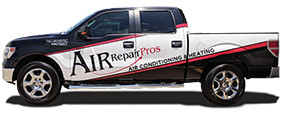Regular AC Maintenance is Important in the North Dallas Area
An air conditioner’s filters, coils, and fins require regular maintenance for the unit to function effectively and efficiently throughout its years of service. Neglecting necessary maintenance ensures a steady decline in air conditioning performance while energy use steadily increases.
Air Conditioner Filters
The most critical maintenance task that will ensure your air conditioner’s efficiency is routinely replacing or cleaning its filters. Clogged, dirty filters block normal airflow and significantly reduce a system’s efficiency. With normal airflow obstructed, air that bypasses the filter may carry dirt directly into the evaporator coil and impair the coil’s heat-absorbing capacity. Filters are located somewhere along the return duct’s length. Common filter locations are walls, ceilings, furnaces, or the air conditioner itself.
Clean or replace your air conditioning system’s filters every month or two during the cooling season. They are available in a variety of types and efficiencies. Some types of filters are reusable, while others must be replaced regularly. Filters may need more frequent attention if the air conditioner is in constant use, is subjected to dusty conditions, or you have fur-bearing pets in the house.
Air Conditioner Coils
The air conditioner’s evaporator coil and condenser coil collect dirt over their months and years of service. A clean filter prevents much of that dirt from reaching the evaporator coil from soiling quickly. Some dirt and contaminants may still get through, reducing airflow and the coil’s ability to absorb heat. That’s why it’s a good idea to check your evaporator coil regularly and clean it.
Outdoor condenser coils can also become very dirty if the outdoor environment is dusty or if there is foliage nearby. You should minimize dirt and debris near the condenser unit. Dryer vents, falling leaves, and lawn mowers are all potential sources of dirt and debris. Cleaning the area around the coil, removing debris, and trimming foliage back at least 2 feet (0.6 meters) allows for adequate airflow around the condenser.
Sealing and Insulating Air Ducts
An enormous waste of energy occurs when cooled air escapes from supply ducts or when hot attic air leaks into return ducts. Recent studies indicate that 10% to 30% of the conditioned air in an average central air conditioning system escapes through the vents.
For central air conditioning to be efficient, ducts must be airtight and sealed with duct mastic sealant. The old standby of duct tape is less effective. Hiring a competent professional service technician to detect and correct duct leaks is a good investment since leaky ducts may be difficult to find without experience and test equipment.
Obstructions can impair the efficiency of a duct system almost as much as leaks. You should be careful not to obstruct air flow from supply or return registers with furniture, drapes, or tightly fitted interior doors. Dirty filters and clogged evaporator coils can also be major obstructions to airflow.
The significant temperature difference between attics and ducts makes heat conduction through ducts almost as big a problem as air leakage and obstructions. Ducts in attics should be insulated heavily in addition to being made airtight.
 Skip to content
Skip to content














